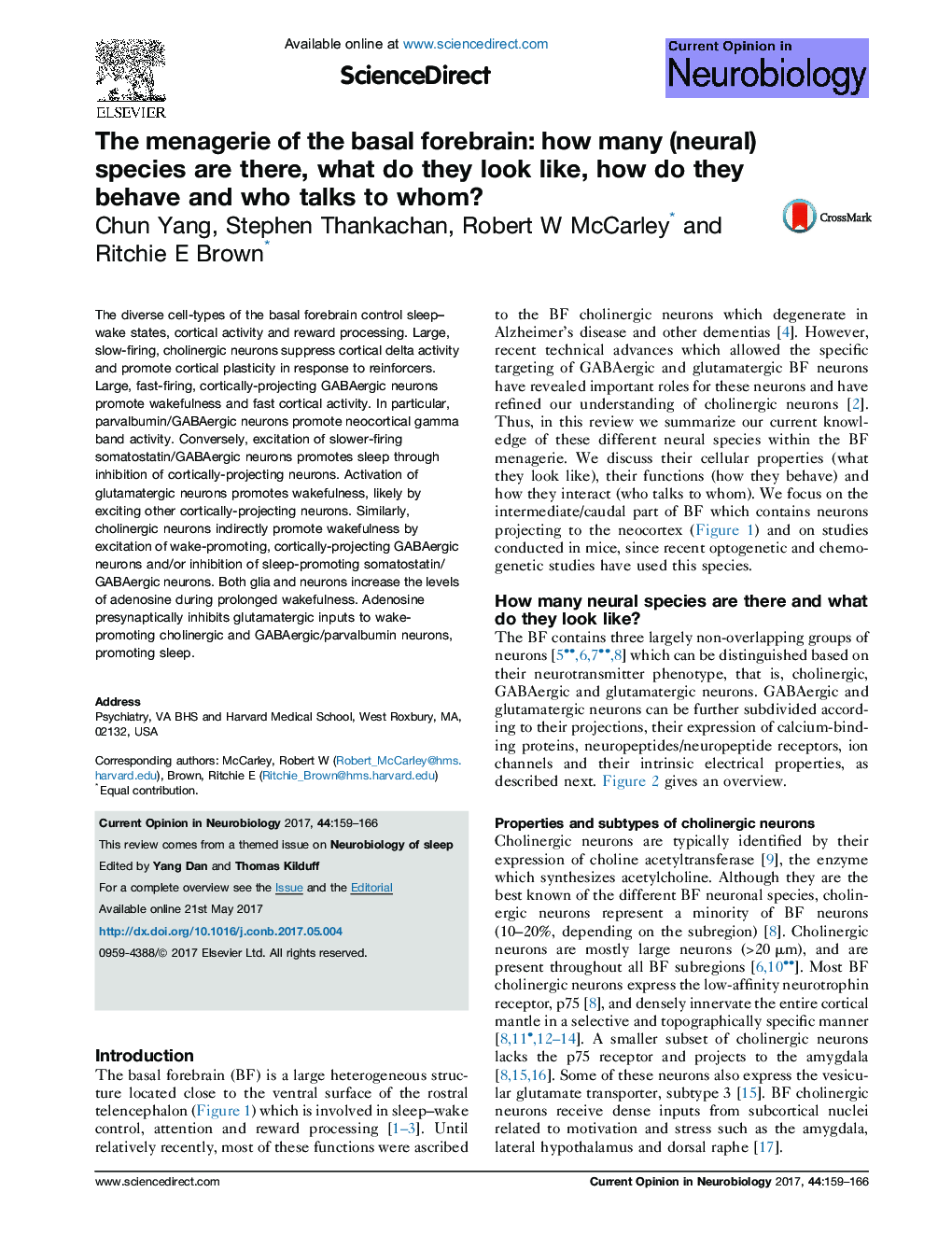| Article ID | Journal | Published Year | Pages | File Type |
|---|---|---|---|---|
| 5737020 | Current Opinion in Neurobiology | 2017 | 8 Pages |
â¢Cholinergic, GABA and glutamatergic neurons all affect cortical activation.â¢Cholinergic neurons suppress cortical delta activity and promote cortical plasticity.â¢GABA/parvalbumin neurons promote gamma activity and fast arousals from sleep.â¢GABA/somatostatin neurons inhibit wake-promoting neurons.â¢Increases in extracellular adenosine promote sleep during prolonged wakefulness.
The diverse cell-types of the basal forebrain control sleep-wake states, cortical activity and reward processing. Large, slow-firing, cholinergic neurons suppress cortical delta activity and promote cortical plasticity in response to reinforcers. Large, fast-firing, cortically-projecting GABAergic neurons promote wakefulness and fast cortical activity. In particular, parvalbumin/GABAergic neurons promote neocortical gamma band activity. Conversely, excitation of slower-firing somatostatin/GABAergic neurons promotes sleep through inhibition of cortically-projecting neurons. Activation of glutamatergic neurons promotes wakefulness, likely by exciting other cortically-projecting neurons. Similarly, cholinergic neurons indirectly promote wakefulness by excitation of wake-promoting, cortically-projecting GABAergic neurons and/or inhibition of sleep-promoting somatostatin/GABAergic neurons. Both glia and neurons increase the levels of adenosine during prolonged wakefulness. Adenosine presynaptically inhibits glutamatergic inputs to wake-promoting cholinergic and GABAergic/parvalbumin neurons, promoting sleep.
